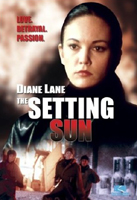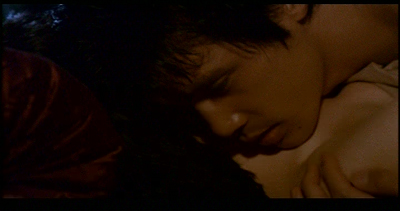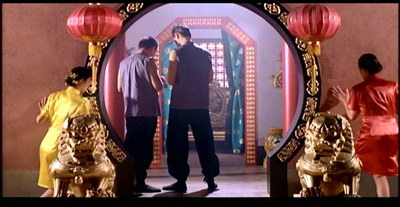 BUY IT AT AMAZON: CLICK HERE!
BUY IT AT AMAZON: CLICK HERE!
STUDIO: Pathfinder Home Entertainment
MSRP: $19.98
RATED: NR
RUNNING TIME: 119 Minutes
SPECIAL FEATURES: Filmographies and still gallery
The Pitch
"How do you say, Vive la resistence! in Chinese?"
The Humans
(Gozu).
The Nutshell
Ah,
opium. The opiate of the masses. Back in the 1930s, when
illegal occupation of
and the harvesting and sale of opium. One young Japanese soldier, Kaya (Kato),
finds himself doubly caught between the two countries, first when the Chinese
drug lords start a war-within-a-war against the Japanese opium business, and
again when he falls in love with a beautiful resistance leader (Lane).

The earliest blue-screen work was filmed because, well,
some guy thought it looked pretty.
The Lowdown
That’s
about all the historical context you’re going to get when the film kicks off.
The audience gets tossed into a cabaret fistfight with little in the way of
context to anchor the drama. That would be all right — action-oriented
introductions have been used well in the past, as long as they are explored
well in later scenes — except that all subsequent action scenes are about as
divorced from context.
It’s hard
to gather where attention was paid to this film’s creation. The story is a
simple lovers-as-metaphors-for-nations affair, the technical facets are nothing
noteworthy, and the characters are almost all underwritten. It’s this last one
that’s the most grievous error. The only two characters that get an inch of
dimension are the leads; the rest are just automatons, emotionally blank.
The mood
of the film follows suit, with about as much sizzle as a clump of dirt thrown
on a bed of embers. The historical facts are used as lynchpins for the story,
but it follows this sort of rhythm throughout:

Length of sex scene: 40 seconds. Cuts to continuity: all of them.
1)
Narrator introduces historical event (in fifty words or less)
2)
Characters react to that event like lions reacting to the crack of a whip
It’s
obvious that historical accuracy was not the goal of the picture, but the
character story doesn’t step up to fill in the cracks. The love story is
hopeless, with baffling alternations between fiery passion and frigidity.
There’s an earnestness about the whole ordeal, but it’s inadequate to carry the
narrative alone.
The Setting Sun fails on its screenplay. It’s a
melodrama, in that it is governed by events, not characters, but
writer/director Ro Tomono seems to have thought he was writing a character
piece. The result is a confused, loping film, and an historical drama that
skimps on both fact and fiction.

"Don’t look now, but I think we’re about to be ambushed by condiments."
The Package
There are
some frequent, but minor, problems with the color balancing and saturation in
the transfer. There’s nothing else particularly noteworthy about the video. The
cinematography is workmanlike, but clean. The soundtrack is riddled with
effects that break the illusion of natural occurrence because they’re mixed
louder than everything else, which gives the film kind of an accidental
cartoony feel.
As far as
bonuses, well: filmographies and a still gallery. Have fun!
5.7 out of 10